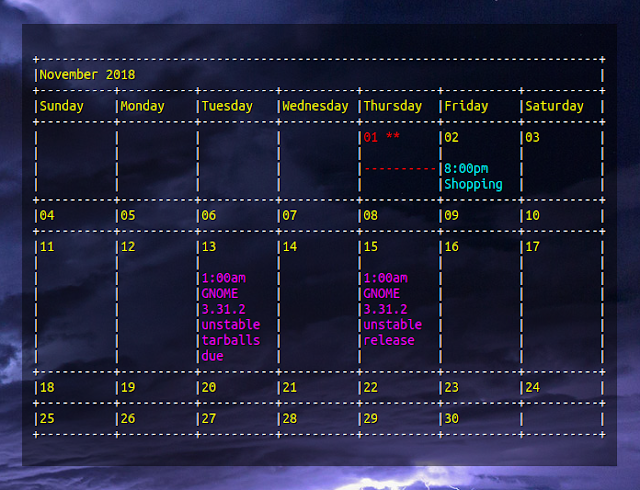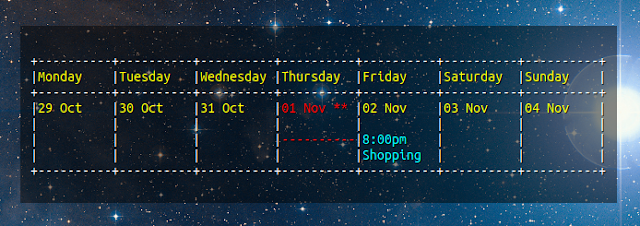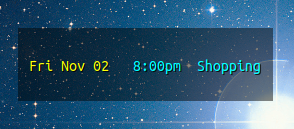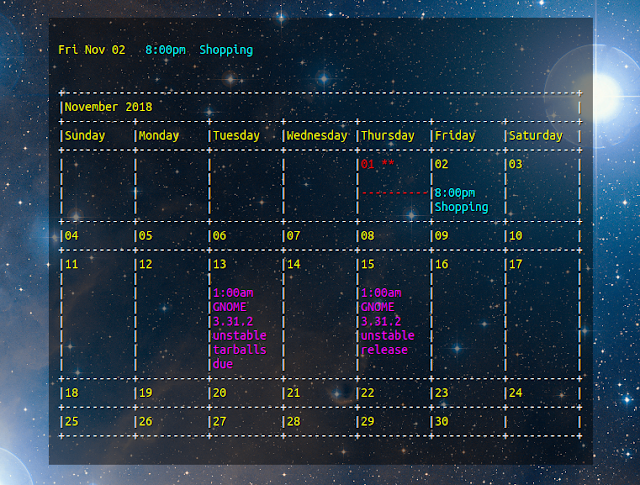It was white, not much bigger than my hands held side by side, weighed
about as much as a bottle of wine, and it came in a shiny, faux-leather case. It
was the $199 Asus Eee 901, and I couldn’t believe that a computer could be
that powerful, that light and that much fun.
This is the story of the brief, shining history of the Asus Eee, the
first netbook—a small, cheap and mostly well-made laptop that dominated
the computer industry for two or three years about a decade go. It’s not so
much that the Eee was ahead of its time, which wasn’t that difficult in an
industry then dominated by pricey and bulky laptops that didn’t always have
a hard drive and by desktop design hadn’t evolved much past the first IBM
8086 box.
Rather, the Eee was ahead of everyone’s time. It ran a Linux
operating system with a tabbed interface and splashy icons, and the hardware
included wireless, Bluetooth, a webcam and an SSD hard drive—all in a
machine that weighed just 2.5 pounds. In this, it teased many of the concepts
that tech writer Mark Wilson says we take for granted in today’s cloud,
smartphone and Chromebook universe.
The Eee was so impressive that even Microsoft, whose death grip on the
PC world seemed as if it would never end, took notice. As everyone from Dell to
HP to Samsung to Toshiba to Sony to Acer to one-offs and “never-weres” raced
netbooks into production, Microsoft offered manufacturers a version of Windows
XP (and later a truncated Windows 7) to cram onto the machines. Because we
can’t have the masses running a Linux OS, can we?
“The Eee gave regular people something they couldn’t have
before”, says Dan Ackerman, a longtime section editor at CNET who wrote
some of the website’s original Eee and netbook reviews. “Laptops had
always been ridiculously expensive. The Eee wasn’t, and it gave regular
people a chance to buy a laptop that was smaller and more portable and that
they could be productive with. I always gave Asus credit—they understood
the role of form and function.”
Netbook History
The computer world never had really seen anything like the first Eee,
which didn’t even have a name when it was launched in 2007 (although it
later would be called both the 701 and the 4G). In fact, say those who reviewed the
701, it wasn’t so much a product but a proof of concept—that Asus
could make something that small and that cheap that worked.
There had been small laptops before, of course, like the Intel
Classmate PC and the OLPC X0-1, each part of the One Laptop per Child project.
But those were specialized machines designed to bring computing and the
internet to students throughout the world, and not necessarily consumer
products.
The netbook’s immediate predecessors were probably the palmtop and
the personal digital assistant, or PDA. These were handheld devices like the
Psion 7 and the HP Jornada 720 that did some computer things, including word
processing and email (and faxes in the late 1990s models). But they were slow
and under-powered (remember Windows CE?), and it wasn’t easy to work with the
tiny screens. In many ways, they were unsophisticated smartphones that
couldn’t make phone calls.
I used a Jornada 720 around the turn of the century. It was cheaper and
more reliable than my previous two laptops, which were buggy, crash-prone and
always seemed to have something wrong with the disk drive. I could sort of type
on the Jornada’s downsized QWERTY keyboard, and it synced with my desktop
(though the modem never really worked).
But the netbook’s true predecessor was almost certainly Radio
Shack’s legendary TRS-80 model 100—or as we lovingly called in in the
newspaper business, the Trash 80. It ran on Microsoft Basic and had a more or
less full-sized keyboard, a monochromatic screen that displayed about ten lines
of type and a 300-baud modem. The Trash 80 weighed about three pounds, and I
lugged it to football games, bike races and city council meetings in the late
1980s. There, I would write the story, hook the modem up to a phone jack
(acoustic couplers before that) and send it to the paper by hitting a
combination of buttons located just above the keyboard. Would that any of my
laptops had worked that well.
In other words, there hadn’t been anything quite like the Eee 701
in 20 years.
“I can’t say I remember exactly walking into the room when Asus
showed us the first Eee, but I do remember that I had never seen anything quite
like it”, says Ackerman. “It was an amazing accomplishment for the
price.”
Yes, the price. In 2005, the average laptop cost about $1,000, and you
didn’t get all that much for a grand—an HDD drive, wireless, a
touchpad and maybe an optical drive. But you also got a bulky machine that
weighed five or six pounds with crummy battery life—often as little as two
hours.
The 701, on the other hand, cost $199, weighed half as much as the
$1,000 laptop, sometimes had better battery life, and it came with some of the
same hardware (minus the optical drive). And, you could argue that its tiny SSD
drive was an improvement over the era’s 20 and 30GB laptop hard
drives—quieter, less power hungry and more nimble. Yes, the processor
wasn’t as fast, it had less RAM, and the screen was smaller, but that
didn’t seem to matter.
“It was a crazy concept, but there was an incredible response”,
says Wilson, today a senior writer at Fast Company. “Within six months, it
seemed like every computer maker was cloning it.”
Get Me Linux
How did Asus get the price so low? Cutting the weight helped. Using
cheaper materials for the body, keyboard and screen made a difference too, as
did the less expensive processor and memory. But one of the most important
factors was substituting Linux for Windows.
An Asus spokesman did not respond to several requests for information
for this story, but those with knowledge of the company’s thinking said
choice of operating system was crucial in lowering the Eee’s price. A
Microsoft license, depending on who you talk to, could have cost almost as much
as the netbook’s suggested retail price. Even if Asus had absorbed some of
the license fee, it would have been almost impossible to hit $199, then
considered the sweet spot for pricing.
Enter Xandros, the operating system that Asus used on the Linux-powered
versions of the Eee. It was perhaps the machine’s greatest asset and its
biggest weakness. Since it was Linux, there was no Microsoft licensing fee,
making it easier for Asus to hit $199. But Xandros was not quite open-source
Linux—it was a commercial product from the same-named British company
whose revenue came from “partnering” with OEMs. Which, of course, is
what Microsoft did.
And, as anyone who knows anything about the Linux community will tell
you, any open-source company with a Microsoft-like business plan can’t
really be open-source or true to the spirit of Linux. In this, Asus alienated
the people who should have been the Eee’s biggest supporters. Look on
bulletin board and Reddit posts, and you’ll still see some of the
resentment at the choice of Xandros.
Xandros’ other problem? It was just a little too Linux for the
millions of people who bought it and who were used to Windows. It’s not to
say that Xandros didn’t try—the company’s mission was to be a
Windows-like interface to Linux, and it was based on Debian, just like Ubuntu
and Linux Mint.
But those of us who came to Linux through the Eee had never seen
anything quite like Xandros. It was was funky, to say the least, and this comes
from someone who had had his fill of Windows by then (Windows ME, anyone?). I
was desperate to run something that didn’t make me pound the keyboard in
frustration at every crash, Control-Alt-Delete and hanging screen.
Today, a browser-based OS like Chrome is second nature; in 2007, it
could be befuddling to anyone who grew up pointing and clicking in Windows 95.
Xandros, save for the word processor, email and browser, was a
mystery—to this day, I still don’t know what something called mediaU was supposed
to do. It was almost impossible to add new software, and if you wanted to do
anything other than basic software updates, you had to use the command line. I
had been through that with DOS—I didn’t want to do it again. And, of
course, support was non-existent.
To be fair, Asus was limited in its choices. Mint was still in its
early stages, Ubuntu wouldn’t release its netbook OS until 2009, and Fedora
probably wasn’t quite right for something like this. But, as Wilson says
with a laugh: “Xandros was the kind of Linux that reminded people why they
didn’t want to use Linux.”
Running Scared
It’s almost impossible to believe, a decade later, how popular
netbooks were in the wake of the Eee. Way past popular, actually: the netbook
was the best-selling computer in the world in 2009, with seven-fold growth from
2008 and some 20 million sold. That accounted for almost 10% of the
entire computer market at a time when the recession saw desktop computer sales
fall 12%, the worst decline in its history.
Asus gloried in the Eee’s success. It updated the netbook every
couple of months, adding power and improving screen size and resolution. CNET
reviewed eight versions in 12 months, and even the most expensive cost one-half
of a typical laptop of the time.
The 900, the first real production model, had a 9″ screen, a 4GB
SSD and 1 GB of RAM. I literally wore it out, using it until I cracked the
keyboard and broke the A key off. I replaced it with the Eee 1005 a year
later, which had a 10″ screen, 2GB of RAM, a 160GB HHD and four hours of
battery life. I still have it, and it works as well as it ever did. The 1101,
meanwhile, had an 11.6″ screen and a 160GB HDD and still weighed just
three pounds.
Netbooks and the Eee were so successful, in fact, that research
analysts who followed Apple—whose top executives had famously called the
machines “junk”—warned the company that it had better do
something to compete. Mac sales fell in 2008, the first decline in five and
a half
years, and an analyst told Computerworld: “Vendors are waking up to the
fact that people respond to so-called ‘good-enough’ computing. They
don’t really need all the power of a Core 2 Duo CPU most of the time.”
But Apple wasn’t the only company that saw the netbook as a threat.
So did Microsoft, whose abhorrence of Linux was part of the company’s DNA
(remember “Linux is a cancer”?). A Microsoft spokesman did not respond
to several requests for information for this story, so it’s difficult to
know exactly what the company thought. But, says Wilson, “though I
don’t presume to speak for Microsoft, for about six months to a year, they
had to be worried. There were not a lot of phenomenons in the laptop world at
the time.”
The Microsoft dilemma: it was phasing out Windows XP, which could and
did run on some early netbooks, in favor of Windows Vista. But, reported the
New York Times in April 2009, it was “downright embarrassing that Vista is
too tubby to run well on on the best-selling laptops in the market”. Hence,
Microsoft had to find a way to cram the desktop version of Windows 7 onto a
netbook.
Which it did, though the results left much to be desired. I
“activated” the so-called Windows 7 Starter version on a friend’s
netbook; it literally took all night to install, clacking and churning and
rebooting. And then rebooting some more. “They got Windows working on
netbooks”, says Ackerman, “and if it didn’t work well, it worked
well enough”.
More important, Microsoft cut the Windows 7 licensing fee for
netbooks by one-third. It was $75 a copy for a desktop, but only $25 for
netbooks (which it had apparently charged for XP on netbooks too).
This was the beginning of the end. Wrote the Times: “[C]onsumers
have shown their preference for Windows on netbooks….Linux went from
almost 100 percent share on netbooks in the early days to just 20 percent after
Microsoft started offering Windows XP on the systems.”
A Fond Memory
So much for Linux for the masses. But worse was yet to come for the
Eee: Apple released and refined the iPad and the iPod Touch during the next
couple years. Even more important, it unveiled the iPhone 3GS in June 2009.
One million 3GSes were sold in three days, and consumers—thanks to
the revolutionary Apple app store—discovered they didn’t need a
computer to send email, listen to music or browse the web. And, at $99, the
3GS undercut the Eee on price. The modern smartphone had arrived.
The Eee and netbooks didn’t go away immediately, of course. Genuine
efforts were made to keep it relevant—Asus released the $500 1201 in
2010, with a 12.1″ screen and more-or-less desktop resolution. The Linux
community, meanwhile, offered operating systems like Ubuntu netbook,
EasyPeasy/Ubuntu Eee, Joliecloud and Peppermint OS. But the 1201 wasn’t so
much a netbook as the forerunner to the ultrabook, and only those of us who
wanted to run Linux instead of Windows would spend the time to install one of
the new OSes over Windows and the few Xandros machines that were still
being sold.
The end came in 2012, when Acer said it would stop production, and Asus
discontinued the Eee. Tellingly, more tablets were sold than netbooks that
year. But the Eee lives on, and not just because those of us who still have one
or two will pop a thumbdrive into one of its slots, load Puppy or Antix or
Lubuntu, and give it a whirl.
Today’s high-end laptops adapted the Eee’s strengths—battery life and
weight, among others—and combined it with high-end
specs. And, frankly, anyone who has negotiated a smartphone home screen,
flicking those big, shiny icons, is doing about what we did with Xandros and
its home screen on the Eee 901.
And it lives on in the Chromebook: a simple, inexpensive and
lightweight laptop that does what most people need a computer to do—send
email, browse the internet and do word processing. And it does it all through
a browser window without the blue screen of death, Control-Alt-Delete, and
updates that need to reboot and reboot and reboot. And then reboot again.
And isn’t that what computing should be about?
Source







